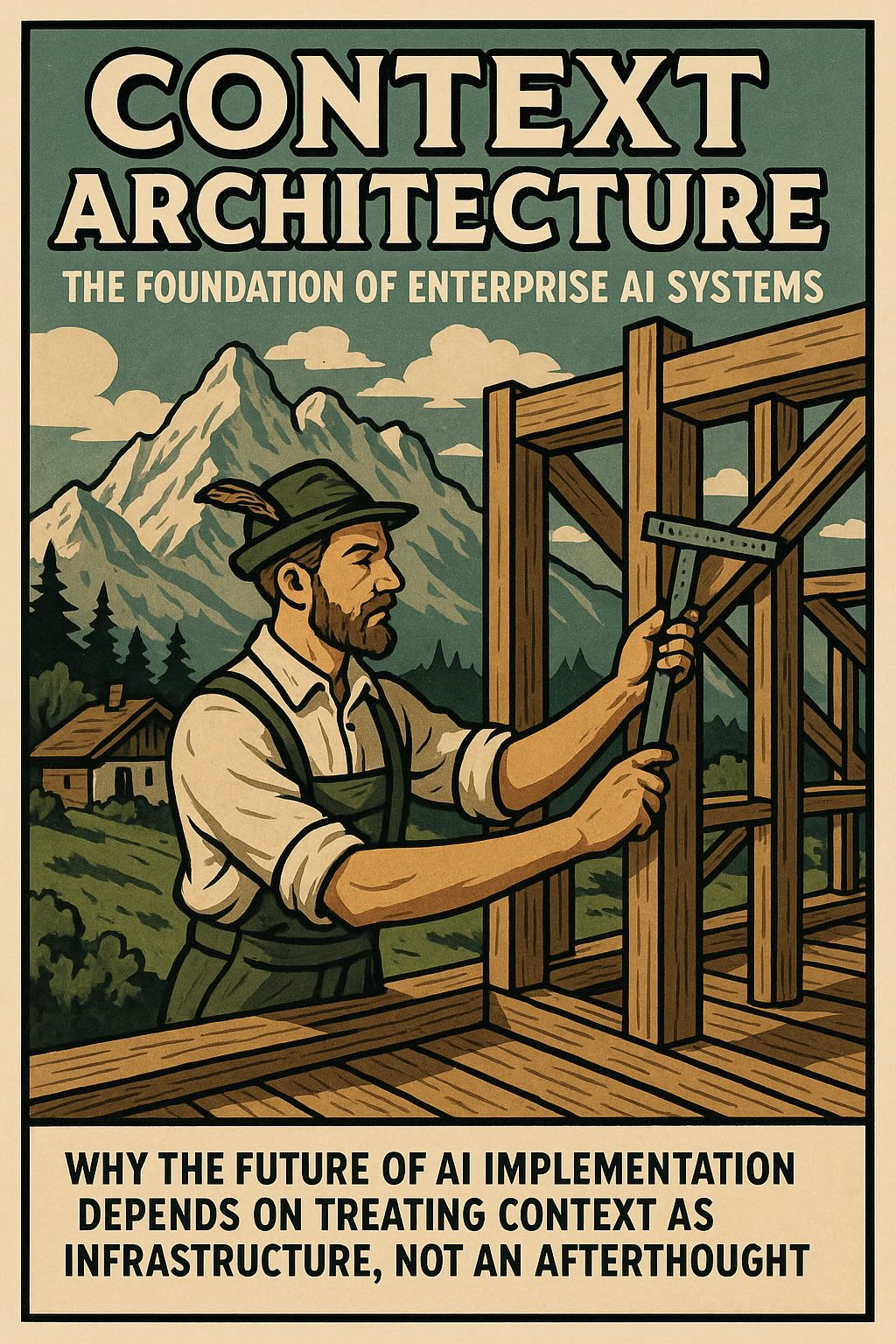Why the future of AI implementation depends on treating context as infrastructure, not an afterthought
When business leaders first encounter generative AI, they often think success comes from finding the right model or the perfect prompt. After implementing quite a few generative AI systems for enterprises, I’ve learned something different: the architecture of context is what separates AI experiments from AI systems that deliver lasting business value.
Beyond Prompt Engineering: Building AI Context Architecture
You’ve likely heard of “prompt engineering” – the practice of crafting better instructions for AI models. But what I am seeing in successful AI deployments goes far beyond writing clever prompts. We call it context architecture, and it’s fundamentally about architecture.
Think of it this way: when you build a software system, you don’t just write code – you design databases, plan integrations, structure workflows, and create monitoring systems. Context architecture applies this same systematic thinking to AI systems. It’s the discipline of designing and optimizing all the information, instructions, and processes that surround your AI model to ensure reliable, measurable results and new value.
The Hidden Infrastructure of AI Success
Every successful AI system relies on carefully engineered context that most users never see. This invisible infrastructure includes:
Structured Instructions: Not just telling the AI what to do, but precisely defining how it should approach problems, what format outputs should take, and how to handle edge cases.
Dynamic Information Management: Automatically providing relevant, up-to-date context like current dates, company-specific data, or user preferences without overwhelming the system with unnecessary information. (think of RAG, memory, state and process descriptions for example)
Quality Control Systems: Built-in processes to validate outputs, catch errors, and maintain consistency across different scenarios.
Integration Architecture: Seamlessly connecting AI capabilities with your existing business systems, databases, and workflows.
Why This Matters for Business Leaders
Poor context architecture is often the root cause when AI initiatives fail to scale. I see companies that achieve impressive demos but struggle to deploy AI in production because they treated context as an afterthought rather than as foundational architecture.
Consider a customer service AI system. A basic approach might simply tell the AI to “help customers with their questions.” But production-ready context architecture would include:
- Structured access to customer history and account information
- Instructions and descriptions of internal processes
- Clear escalation protocols for complex issues
- Brand voice guidelines and approved response templates
- Integration with ticketing systems and knowledge bases
- Continuous monitoring and improvement processes
Our Approach to AI Architecture
At Alpine Intelligence, our background in enterprise software architecture informs how we approach context architecture. Just as you wouldn’t build a critical business system without proper architecture, we believe AI systems require the same rigorous approach to context design.
This means:
Planning Before Building: Understanding your business requirements, data landscape, and integration needs before designing the AI system’s context architecture.
Systematic Implementation: Creating structured, maintainable architecture that can evolve with your business needs rather than requiring constant manual adjustment.
Measurable Outcomes: Building evaluation and monitoring into the context architecture from day one, so you can prove ROI and continuously improve performance.
Knowledge Transfer: Ensuring your team understands not just how to use the AI system, but how its context architecture works and how to maintain it.
Making Context Architecture Strategic
The companies that will succeed with AI are those that treat context architecture as a strategic capability, not a tactical task. This requires:
Investment in Architecture: Allocating time and resources to properly design context systems rather than rushing to deployment.
Cross-Functional Collaboration: Bringing together technical teams, domain experts, and business stakeholders to inform context design.
Continuous Optimization: Treating context as living infrastructure that requires ongoing measurement, refinement, and evolution.
Internal Capability Building: Developing your team’s understanding of context architecture principles so they can maintain and improve AI systems over time.
Der Weg nach vorne
Context architecture represents the maturation of AI implementation from experimental to enterprise-grade. It’s the difference between AI systems that work in demos and AI systems that deliver sustained business value.
For business leaders evaluating AI initiatives, the key question isn’t just “What can this AI model do?” but “How will we architect the context that makes this AI model consistently valuable to our business?”
The companies that master context architecture will have a significant competitive advantage. They’ll deploy AI faster, more reliably, and with better business outcomes. More importantly, they’ll build AI capabilities that scale and evolve with their business rather than requiring constant manual intervention.
Ready to explore how context engineering can accelerate your AI initiatives? Alpine Intelligence specializes in bridging the gap between AI potential and practical implementation through rigorous architectural approaches. Contact us to discuss your AI strategy and learn how proper context engineering can ensure your success

